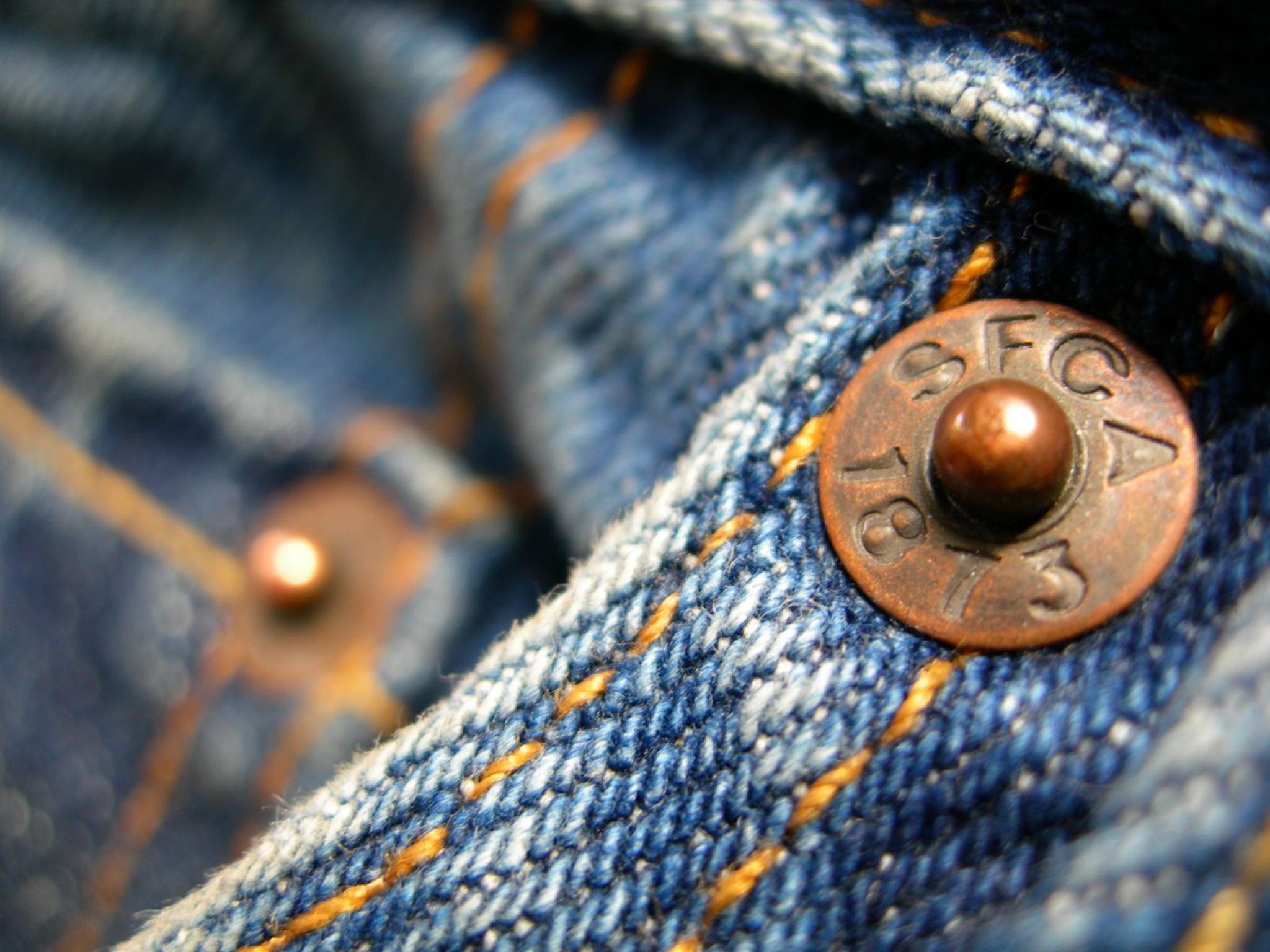Those tiny bits of metal on the pockets of your jeans are actually really important
Without them your jeans would be full of holes

Your support helps us to tell the story
From reproductive rights to climate change to Big Tech, The Independent is on the ground when the story is developing. Whether it's investigating the financials of Elon Musk's pro-Trump PAC or producing our latest documentary, 'The A Word', which shines a light on the American women fighting for reproductive rights, we know how important it is to parse out the facts from the messaging.
At such a critical moment in US history, we need reporters on the ground. Your donation allows us to keep sending journalists to speak to both sides of the story.
The Independent is trusted by Americans across the entire political spectrum. And unlike many other quality news outlets, we choose not to lock Americans out of our reporting and analysis with paywalls. We believe quality journalism should be available to everyone, paid for by those who can afford it.
Your support makes all the difference.The tiny metal round things on the pockets of jeans may have escaped most people’s notice.
Known as ‘rivets’, they are placed on areas of the jeans that are most likely to be pulled apart by strain or movement and help hold the fabric together, thereby making them last longer.
But their contribution to the history of denim - and how it acquired its massive popularity - is more interesting. In fact, they led to the creation of "jeans".
In the 1870s, labourers wore denim as they worked but the physical labour caused their trousers to fall apart quickly.
For this reason, the wife of a labourer went to Jacob Davis, a tailor, and asked if he could create a pair of denim work trousers that would not disintegrate quicte so easily.
Mr Davis came up with the idea of putting rivets on the areas that endured the most strain, such as pocket corners and the base of the fly. The rivets helped hold the fabric together, and meant the trousers were less likely to tear.
With his riveted trousers an instant hit among workmen, Mr Davis needed a business partner, and contacted a certain Levi Strauss, who was a dry goods merchant at the time and had sold Mr Davis the fabric to make his trousers.
The two men received a patent on the design in 1873, and the riveted trousers became a huge success – though they only took the name ‘jeans’ during the 1960s.
Though denim trousers had been used for years previously, it was the creation of rivets that led to the making and selling of what we now refer to as ‘jeans’.
Join our commenting forum
Join thought-provoking conversations, follow other Independent readers and see their replies
Comments